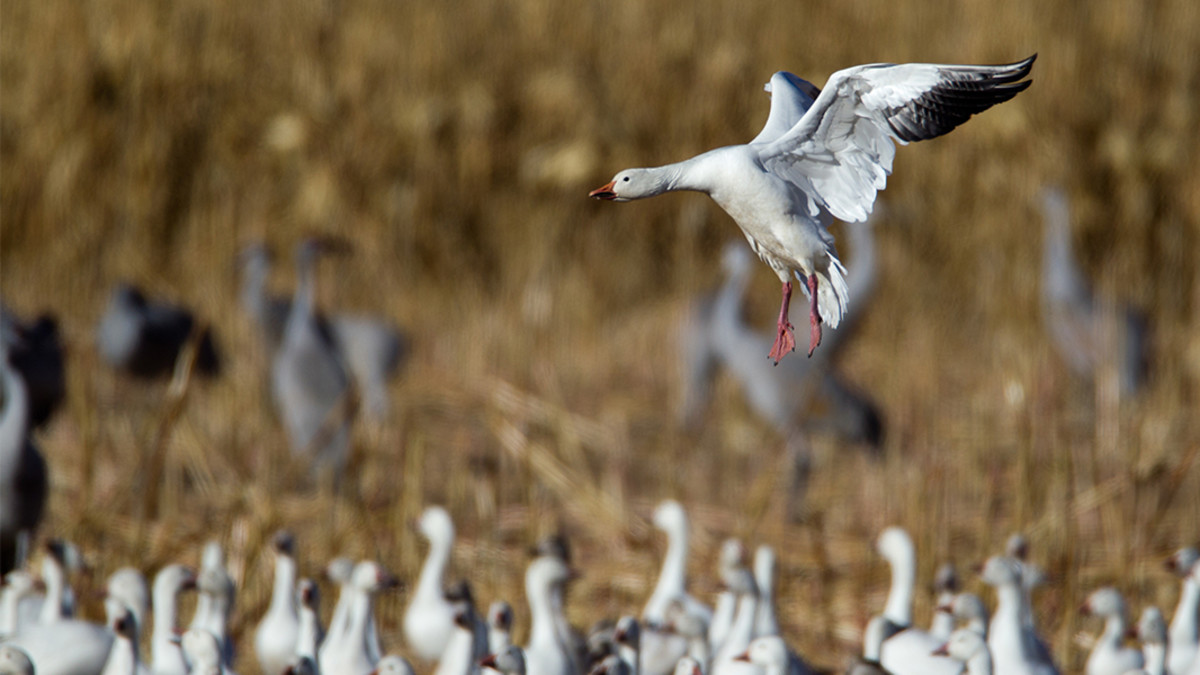
Snow geese are an ecological winner of the modern age. They’ve adapted so well to modern agricultural practices in their southern wintering grounds that their populations have exploded wildly in recent decades; today, they stand to severely damage their Arctic breeding grounds with overgrazing.
Government game managers across the snow goose’s wintering grounds and along its migratory corridors have basically pulled out all obstacles that stand in the way of hunters being able to harvest as many of the birds as possible.
Bag limits are extremely high to non-existent, seasons extend well into the spring migration season, capacity-limiting plugs are not required on shotguns, and you can even use electronic calling devices, a formerly taboo practice, in the pursuit of snow geese.
It is feared that the species is on the verge of a population collapse. While the flesh is not as good as that of Canada geese, it is still a wonderful thing to have at your disposal.
Scientific Name
Chen caerulescens
A.K.A.
Blue geese, snows
Bar Room Banter
Female snow geese will build their nests on the tundra in areas protected by shrubs and rocks. Rather than building her nest all at once, a female will expand the nest size prior to dropping each individual egg.
Physical Characteristics
Snow geese are usually white with black wingtips. The “blue goose,” often regarded as a separate species, is simply a color phase of the snow goose. These have grayish or slate-colored wings and body with a white head and tail. The Ross’ goose looks very similar to the snow goose, but is smaller and has a shorter, stubbier bill. Snow geese measure about 28” long and weight up to 6 ½ pounds.
Habitat
Snow geese breed high on the Arctic tundra in the summer months, then begin migrating southward in September. Their migration corridors spread them throughout the US; the birds congregate for the winter along the mid-Atlantic states, the Gulf Coast, and Mexico. On their wintering grounds, they are closely associated with agricultural fields.
Diet
Aquatic plants and tubers, a variety of grasses and forbs, and agricultural crops such as rice, corn, alfalfa, and wheat.
Life and Death
Predators such as Arctic foxes and weasels will raid snow goose nests, though adults are much less susceptible to predation. Snow geese can live to be well beyond ten years of age in the wild.
Breeding and Reproduction
A female snow goose will lay 2-6 eggs during the early summer breeding season.
Telltale Sign
Similar to Canada geese – look for concentrations of droppings in active feeding areas.
Edibility
Snow geese have dark, strong-tasting meat that is generally regarded less highly than that of Canada geese. Using brine or similar soaking solution can help with their overall flavor and tenderness. Great for sausages and cured dishes such as confit, corned goose, and pastrami.




